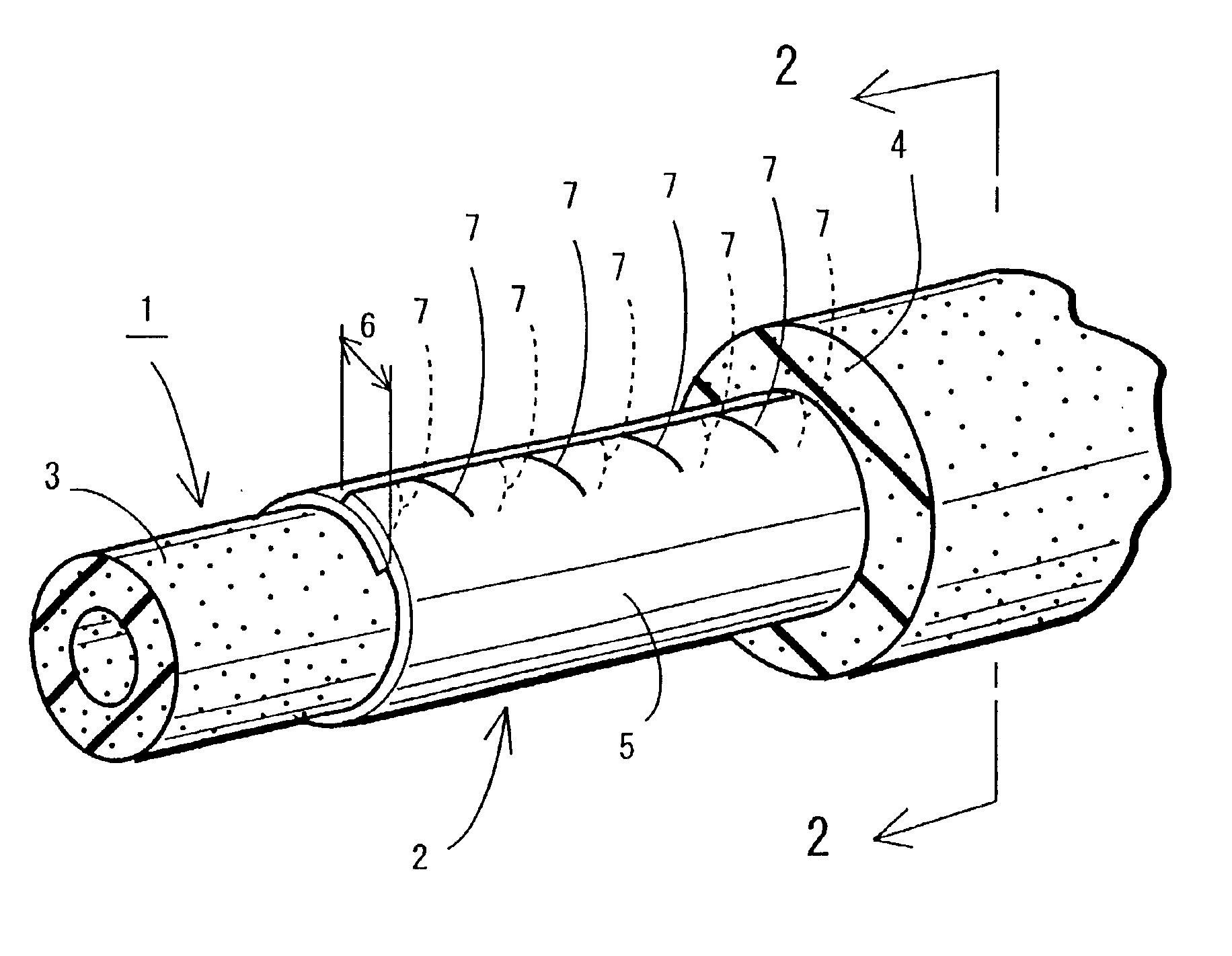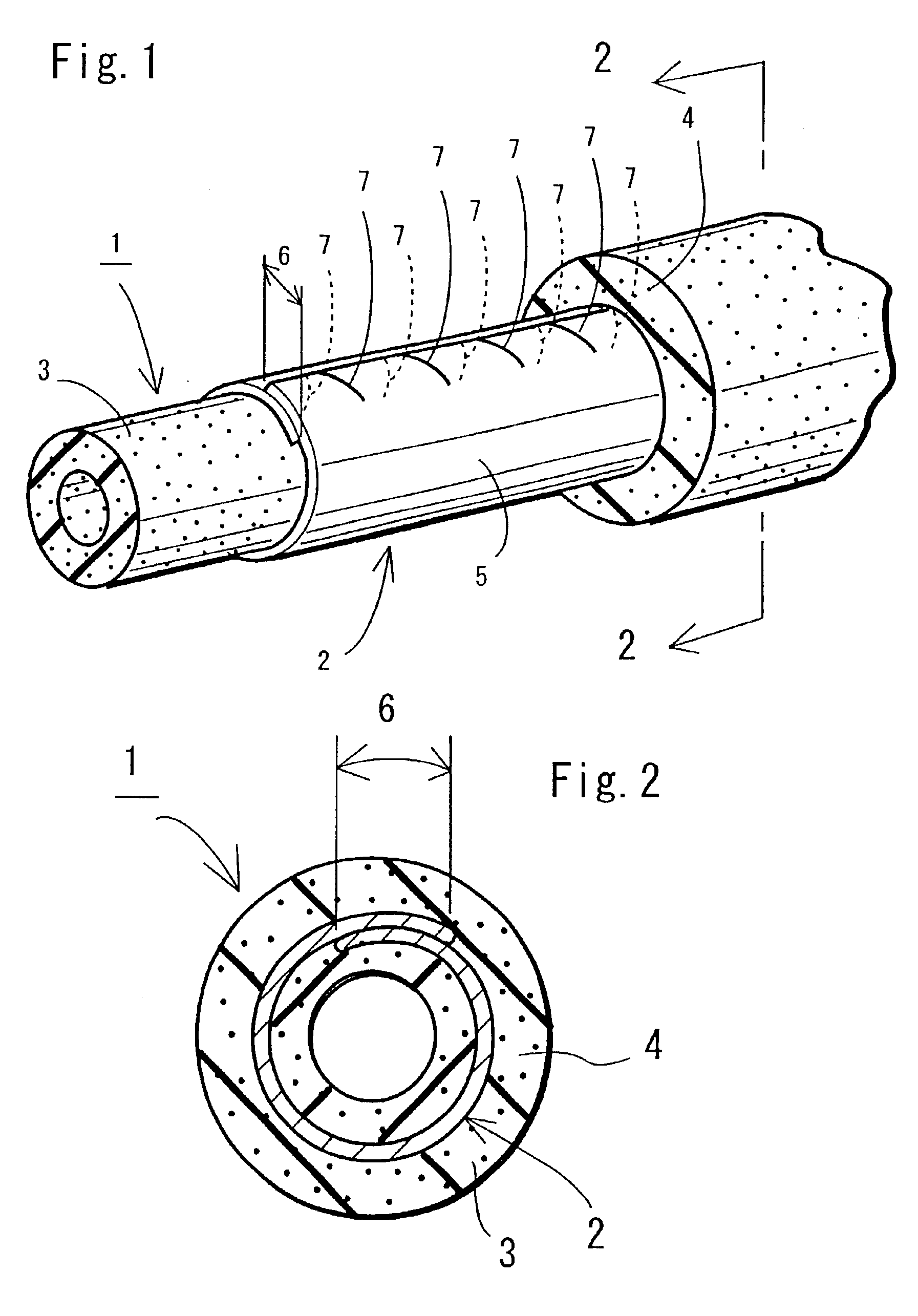Thin-walled rubber hose and method of producing the same
a thin-walled rubber and hose technology, applied in the direction of pipes, mechanical equipment, coatings, etc., can solve the problems of difficult molding, difficult process for coating a subsequent outer layer of rubber according to a hose production method of conventional specifications, and collapse of the inner layer, so as to improve permeability resistance, improve elasticity, and improve the effect of productivity
- Summary
- Abstract
- Description
- Claims
- Application Information
AI Technical Summary
Benefits of technology
Problems solved by technology
Method used
Image
Examples
third embodiment
[0122]FIG. 13 is a third embodiment relating to a structure of the overlaping section. In FIG. 13A, lattice-shaped grooves 40 are provided on at least the overlapping section which are freely bendable. Irregularities such as embossment may be provided in place of the grooves 40. In FIG. 13B, wave-shaped irregularity consisting of recesses 41 and convex sections 42 extending in the vertical direction (in the longitudinal direction parallel to the long side sections) are provided. With this construction, the resin film 5 is easily bent at the recesses 41.
fourth embodiment
[0123]FIG. 14 shows a fourth embodiment relating to an overlapping section 6, in which rough surfaced sections 45 consisting of a minute recessed section or convex section, or of irregular sections are formed at an overlapping section of both end sections on the long sides using a surface roughening method. Since friction at the overlapping section 6 is increased by the rough surfaced sections 45, displacement is not easily caused. As the surface roughening method, there are a suitable mechanical method such as shot-blasting, a method for roughening a surface by chemical treatment and the like. The rough surfaced section is also allowed to be the weak section.
fifth embodiment
[0124]FIG. 15 is an end view of a resin film 5 which is formed in a cylindrical shape and FIG. 16 is an extended perspective view of the resin film 5. As is obvious from these figures, a metal film 50 is laminated to the resin film 5 to provide a laminated structure, wherein the metal film 50 is arranged to face inside. Both films are bonded at an overlapping section 6 by a suitable adhesive. However, if the metal film 50 is integrally embedded in the resin film 5, it is possible to integrally form the overlapping section 6 by welding.
[0125]Such a laminated structure can be provided in various manners, in which the resin film 5 can be a multilayered structure of from two layers to a maximum of about five layers. As a result of the multilayered structuring, characteristics of different resins can not only be compensated for, but also generation of pinholes in the resin film production process can be reduced. The entire thickness of the multilayered structure exhibits the same perfor...
PUM
| Property | Measurement | Unit |
|---|---|---|
| Force | aaaaa | aaaaa |
| Width | aaaaa | aaaaa |
| Width | aaaaa | aaaaa |
Abstract
Description
Claims
Application Information
 Login to View More
Login to View More - R&D
- Intellectual Property
- Life Sciences
- Materials
- Tech Scout
- Unparalleled Data Quality
- Higher Quality Content
- 60% Fewer Hallucinations
Browse by: Latest US Patents, China's latest patents, Technical Efficacy Thesaurus, Application Domain, Technology Topic, Popular Technical Reports.
© 2025 PatSnap. All rights reserved.Legal|Privacy policy|Modern Slavery Act Transparency Statement|Sitemap|About US| Contact US: help@patsnap.com



